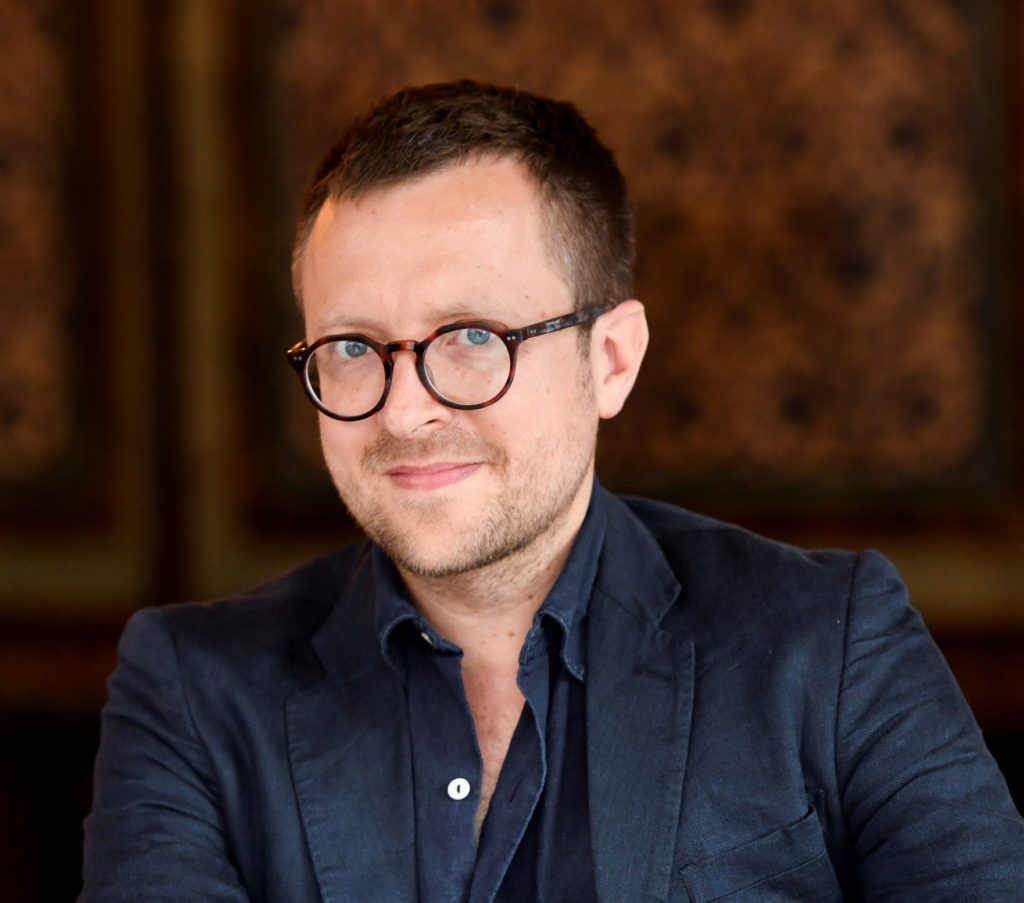 Q&A with Hugo Macdonald, curator of the inaugural craft exhibition, Useful / Beautiful: Why Craft Matters
Q&A with Hugo Macdonald, curator of the inaugural craft exhibition, Useful / Beautiful: Why Craft Matters
Design critic Hugo writes for several international titles Wallpaper*, Monocle and House & Garden. He consults across a broad range of industries, helping define narrative identity and strategy for clients, including Airbnb, The Goldsmiths’ Company, Vitra, Instagram and Ikea.
Can you give a brief summary of what’s happening at Harewood this spring?
It’s a very exciting time indeed. We are opening the inaugural exhibition of the new Harewood Biennial. The exhibition is called Useful/Beautiful: Why Craft Matters, and our mission has been to introduce ideas, challenge preconceptions and inspire debate about the role craft can play in life today. We are surrounded by the word craft today – whether on food packaging in supermarkets or luxury brands, galleries to gift shops to hobbies at home. I’m keen to ask questions about what craft is, and why it matters to us today: is it a product or a process? Is it always something handmade? Is it just a marketing buzzword?
What will visitors see and experience?
We have selected 26 diverse, contemporary practitioners of craft. The group has a variety of experiences, from recent graduates to names of global renown. They have different areas of expertise spanning fashion, textiles, woodwork, glass, metalwork, furniture, paper and leather. Each has been invited to exhibit in a different room on the State Floor and Below Stairs. The works respond in some way to the room, sometimes explicit, sometimes more subtle. So we have a bookbinder in the Main Library, a knife forger in the Old Kitchen, a ceramics studio in the China Room. Each of the exhibitors is a story in its own right, each promoting the idea in their own way that craft adds value to life.
Why craft, why now, why Harewood?
We are undoubtedly witnessing a resurgence of interest in craft. Harewood House itself is a fascinating platform to explore discussions around the subject. The house was built, decorated and furnished in the final days before the first industrial revolution, which would eventually spawn the Arts & Crafts movement. Our exhibition creates an intriguing contrast between historic and contemporary. The exhibits might look very different, but many techniques have not changed significantly. I hope visitors will see beyond aesthetic differences between “old and new” to question why these crafted exhibits are interesting to us today. What do they add to life?
Originally William Morris and the Arts & Crafts movement made a principled rejection of the Industrial Age, back in the late 19th century. With the explosive emergence of industry, there was a belief that it would destroy culture and society.
Today we are approaching the fourth industrial revolution, witnessing the rise of AI (Artificial Intelligence) and automation. I believe this is the reason for our current craft revival: in a world more reliant than ever on digital and virtual elements, people want to reconnect with the physical realm. We are witnessing times of enormous change beyond our control, characterised by forces we don’t understand. Craft is something fundamental. It is an innately human expression. We find it comforting and reassuring.
Who are the exhibitors and what will they bring?
Every exhibitor is fascinating in their own right and I’ve so enjoyed getting to know them and their work, and finding out why what they do matters to them. There is a broad mix: Wakefield-based paper artist and illustrator Andy Singleton is showing beautiful poetic sculptures; Welsh sustainable denim-makers Hiut Denim are demonstrating how craft can economically and socially boost a community; Fox Umbrellas prove that making one thing better than anyone else translates into a global multi-generational business run from a small workshop on the outskirts of Croydon. Visitors will discover Freed of London ballet shoes in The Music Room, with portraits of their work, together with the component parts and a heap of finished slippers. Every single one of the 330,000 slippers made each year is handmade to fit a single foot.
The aim is to show beautiful, contemporary handcrafted objects, against a classic backdrop and to take the time to not only admire, but to probe, question and consider. Craft has a vital place in contemporary life – we want visitors to leave inspired by the many wonderful stories and delighted by the many objects we often take for granted that are the result of another human’s extraordinary knowledge, time, care and skill.
“Have nothing in your house that you do not know to be useful or believe to be beautiful”.
William Morris
